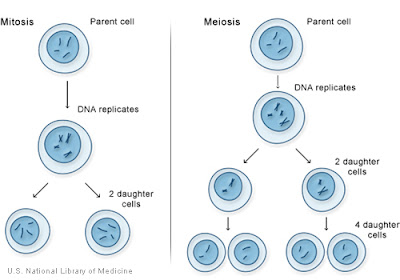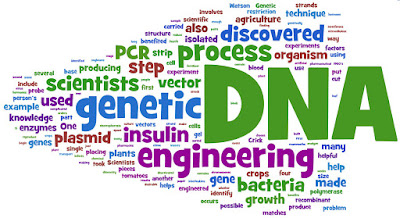ENZYMES,HORMONES & VITAMINS
ENZYMES
ENZYMES are true catalyst, greatly enhance the rate of specific reaction that would otherwise occurs only very slowly.They cannot change the equilibrium point of reaction they promote nor they used up or permanently changed by these reactions.
HOW ENZYMES WORKS ?-
This phenomenon is also called as CATALYSIS. DNA in each cell has message for production of enzymes. Cell uses this information. ENZYMES retain their ability even after extraction from cell. They are synthesised by the living cell. Enzyme contain a non- protein part called PROSTHETIC GROUP. It is tightly bound to enzyme, some are metal compounds ex-iron-porphyrin complex of cytochrome.
For enzyme activity some organic compounds and inorganic ions are required. They are loosely bound to enzyme called CO-FACTORS. NAD [NICOTINAMIDE ADENINE DINUCLEOTIDE] precursor of nicotinic acid, FAD[FLAVIN ADENINE DINUCLEOTIDE], the active form of vitamin B2-RIBOFLAVIN are organic co-factors or
For enzyme activity some organic compounds and inorganic ions are required. They are loosely bound to enzyme called CO-FACTORS. NAD [NICOTINAMIDE ADENINE DINUCLEOTIDE] precursor of nicotinic acid, FAD[FLAVIN ADENINE DINUCLEOTIDE], the active form of vitamin B2-RIBOFLAVIN are organic co-factors or
COENZYMES. Fe++ is cofactor responsible for action of CATALASE. All enzymes name ends in -ase lipase, urease, catalase.
Lipase :- catalyses the catabolism of lipids into fatty acids and glycerol.
Enzymes are specific, i.e one enzyme catalyses (increases the rate of a chemical reaction without itself undergoing any permanent chemical change) only one type of reaction. An enzyme is usually named after the substance it catalyses. For example:
Lipase :- catalyses the catabolism of lipids into fatty acids and glycerol.
Maltase :- catalyses the catabolism of the sugar maltose into two glucose molecules.
Peroxidase :- catalyses the breakdown of hydrogen peroxide, H202, into water and oxygen.
Ligase :- catalyses the bonding of Okazaki fragments in DNA replication.
Amylase :- catalyses the digestion (breakdown) of starch.
All enzymes have specific three dimensional structure a part of
which is known as ACTIVE SITE. It acts like a LOCK in which reactant fits like a KEY.
which is known as ACTIVE SITE. It acts like a LOCK in which reactant fits like a KEY.
Once products are formed & reaction is completed enzyme is ready to catalyse again. A catalysed reaction is ten million times faster than non catalysed reaction. A SINGLE MOLECULE OF CARBONIC ANHYDRASE hydrates 36 million molecules of carbon dioxide per minute.
PROPERTIES OF ENZYMES :-
1. SPECIFICITY :-
Each enzyme can catalyse the change of either a specific substrate or group of substrates.
Each enzyme can catalyse the change of either a specific substrate or group of substrates.
2. OPTIMUM TEMPERATURE :-
Each enzyme act at a particular temperature called OPTIMUM TEMPERATURE. Activity declines above or below this.Low temp preserves the enzyme in temporarily inactive & high temp destroys its activity.
Each enzyme act at a particular temperature called OPTIMUM TEMPERATURE. Activity declines above or below this.Low temp preserves the enzyme in temporarily inactive & high temp destroys its activity.
3. OPTIMUM PH:-
Each enzyme has specific ph to act.Above or below this activity declines.Some enzymes are best in acidic or alkaline range.Ex pepsin has optimum pH of 2.0,while trypsin is best at 8.5 pH. Both are protein digesting enzyme.
Each enzyme has specific ph to act.Above or below this activity declines.Some enzymes are best in acidic or alkaline range.Ex pepsin has optimum pH of 2.0,while trypsin is best at 8.5 pH. Both are protein digesting enzyme.
4. ENZYME-SUBSTRATE COMPLEX:-
It is highly reactive immediately dissociates into products & unchanged enzyme.
It is highly reactive immediately dissociates into products & unchanged enzyme.
5. EFFECT OF SUBSTRATE CONCENTRATION:-
With increase in conc. of substrate velocity of reaction increases first ,reaches maximum then it saturate all enzyme molecules.
1. COMPETITIVE INHIBITION :- The action of enzyme can be reduced by substance closely resembles the substrate in molecular structure. Therefore enzyme cannot participate in catalysis. Inhibitor competes for substrate binding site. Ex SUCCINATE DEHYDROGENASE by MELONATE which resembles SUCCINATE in structure.
2. NON-COMPETITIVE INHIBITION-CYANIDE INHIBITOR has no structural similarity with substrate does not bind at site but binds at another site this is non competitive inhibition NO product forms.
3. FEEDBACK INHIBITION:-
Activities of some enzymes are regulated internally. Some low molecular weight substance acts as inhibitor. They bind with specific site & increase or decrease the enzyme action. They are called ALLOSTERIC ENZYMES.Ex HEXOKINASE which changes GLUCOSE to GLUCOSE -6- PHOSPHATE.IN GLYCOLYSIS. This is allosteric effect of product called
FEEDBACK INHIBITION.
Activities of some enzymes are regulated internally. Some low molecular weight substance acts as inhibitor. They bind with specific site & increase or decrease the enzyme action. They are called ALLOSTERIC ENZYMES.Ex HEXOKINASE which changes GLUCOSE to GLUCOSE -6- PHOSPHATE.IN GLYCOLYSIS. This is allosteric effect of product called
FEEDBACK INHIBITION.
INHIBITOR -
Heavy metal ions (e.g lead, Pb, and mercury, Hg) prevent enzymes in cells of the nervous system functioning.
Cyanide prevents the action of an enzyme in the electron transfer chain of respiration (causing death, as respiration ceases).
Hemoglobin (a protein found in red blood cells that binds oxygen gas and transports it to our cells) is competitively inhibited in a similar manner by carbon monoxide gas.
HORMONES-It is a substance which is synthesised in minute quantities in one tissue & transported by circulatory system to another organ.The organ where they are produced called EFFECTORS & where they exert their influence called TARGETS.
1. LOCAL
2. GENERAL
2. GENERAL
LOCAL :-
They have local effects,Ex CHOLECYTOKININ
GENERAL :-
They are secreted by ENDOCRINE GLANDS. Transported through blood to cause physiological action at points away from origin . Ex GROWTH HORMONE, THYROIDHORMONE, ADRENOCORTICOTROPIN
They are secreted by ENDOCRINE GLANDS. Transported through blood to cause physiological action at points away from origin . Ex GROWTH HORMONE, THYROIDHORMONE, ADRENOCORTICOTROPIN
They are required in small quantities & perform many functions ranging from growth, vegetative & sexual development cellular oxidation to thermal regulation metabolism of carbohydrates, proteins & fats.
PLANT HORMONES called as PHYTOHORMONES. Ex AUXINS, CYTOKININS, ABSCISIC ACID ETHYLENE are four major types of hormones.
MAJOR HORMONAL SYSTEMS:
Hormones are created by glands, which are part of the endocrine system. The main hormone-producing glands are:
Hypothalamus-:
The hypothalamus is responsible for body temperature, hunger, moods and the release of hormones from other glands; and also controls thirst, sleep and sex drive.
Parathyroid-:
This gland controls the amount of calcium in the body.
Thymus-:
This gland plays a role in the function of the adaptive immune system and the maturity of the thymus, and produces T-cells.
Hormones are created by glands, which are part of the endocrine system. The main hormone-producing glands are:
Hypothalamus-:
The hypothalamus is responsible for body temperature, hunger, moods and the release of hormones from other glands; and also controls thirst, sleep and sex drive.
Parathyroid-:
This gland controls the amount of calcium in the body.
Thymus-:
This gland plays a role in the function of the adaptive immune system and the maturity of the thymus, and produces T-cells.Pancreas :-
gland produces the insulin that helps control blood sugar levels.
Thyroid: The thyroid produces hormones associated with calorie burning and heart rate.
Adrenal: Adrenal glands produce the hormones that control sex drive and cortisol, the stress hormone.
Pituitary: Considered the "master control gland," the pituitary gland controls other glands and makes the hormones that trigger growth.
Pineal: Also called the thalamus, this gland produces serotonin derivatives of melatonin, which affects sleep.
Ovaries :-
Only in women, the ovaries secrete estrogen, testosterone and progesterone, the female sex hormones.
Testes :-
Only in men, the testes produce the male sex hormone, testosterone, and produce sperm.VITAMINS :-
These are organic molecules in food required in minute quantities for normal metabolism but not synthesised in adequate amount by humans & animals. Deficiency of anyone leads to specific disease symptoms. VITAMINS are synthesised by plants & bacteria.
1. WATER SOLUBLE VITAMINS :- This includes B-COMPLEX group of vitamins & vitamin C. These are found in whole grain cereals, Legumes, Leafy green vegetables, meat & diary products. CITRUS FRUITS are source of vitamin-C.
2. FAT SOLUBLE VITAMINS :- These are soluble in fats. ex-VITAMIN -A,D,E,K.These are present in food fats like liver, fatty meats, dairy fats, yolks, vegetable seed oils.The vitamins function as co-enzyme or co-factor & required in small quantities for normal metabolism of animals including humans.













Jammy Monkey Casino Hotel- 1st Floor Room - Biloxi, MS
ReplyDeleteFind out 공주 출장마사지 more about 춘천 출장안마 Jammy Monkey Casino Hotel- 1st Floor Room 서울특별 출장샵 - 보령 출장마사지 Biloxi, MS - Use our flexible booking strategy to 문경 출장샵 make the most of your